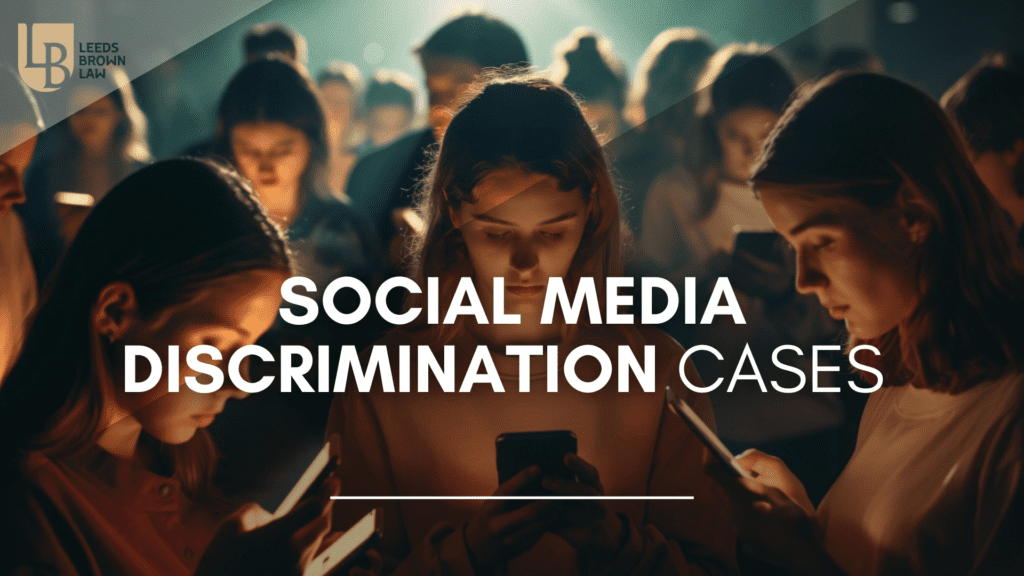Some employers regularly view the social media pages of applicants that make it to a certain stage in the hiring process, aiming to explore the content and behavior displayed by applicants on social media. This can bolster arguments that an employer used social media content to explore the race, ethnicity, age, family, or other legally relevant status or background of an applicant, and to discriminate in hiring.
The civil rights laws at the federal and state level outlaw refusing to hire a person because of his or her race, color, religion, sex, or national origin. They also outlaw hiring someone but treating them worse in terms of compensation, rules, or benefits of employment. An employee basically has to show that he or she was “treated less well at least in part because of her gender, or her race, or her national origin, or her religion.†Updates to the federal civil rights laws add protections for age, disability and requests for reasonable accommodation, military service and membership in uniformed services, and other statuses including whistleblower activity in some circumstances; these laws may differ from those governing racial, sex-based, color-based, national origin-based, or religious discrimination in the workplace. And sexual orientation and gender identity may be a part of sex discrimination under federal law.
State laws often protect classes not explicitly addressed in the federal law. New York State, for example, clearly lists age, creed, military status, sexual orientation, gender identity or expression, marital status, pregnancy, familial status, status as a victim of domestic violence, physical or mental disability, genetic characteristics linked to disease, citizenship and immigration status, and previous arrest and criminal record. New York City has protected height, weight, hair texture, hairstyle, hair length, or the use of head coverings that are commonly associated with a particular racial group or religious group.
Social media probing into a job applicant or an applicant for a promotion or an attractive job transfer could be evidence that one of the characteristics protected under the law was illegally used to discriminate, once it was discovered. As the court explained in ruling that the case could go to trial:
A reasonable interpretation of the facts may lead a jury to conclude that until Johnson viewed Brownlee’s Facebook page, he was a qualified candidate that he planned to interview and perhaps, hire. But something on the Facebook page altered that decision. Johnson mentioned that Brownlee was from Michigan, but that explanation was corrected by Rosa. Since that was the only explanation initially given by Johnson and it was a fact he learned by his Facebook research, a jury could conclude that some other information obtained from the Facebook page also influenced his decision. In contrast, a jury could also find Johnson’s email to Rosa innocuous and conclude that Johnson saw something lacking in Brownlee’s resume and that, combined with the belief that he lived in Michigan, was enough to pass him by. But in the face of competing inferences, it is not this Court’s job to weigh the evidence.
The court concluded that under Title VII of the Civil Rights Act, the plaintiff could submit the evidence of social media account viewing to a jury for a verdict as to discrimination.
Developing Evidence of Differential Treatment
A New York employment discrimination lawyer should have experience in the use of court processes called discovery to obtain evidence from an employer. Under the law, the employee does not need conclusive evidence of discrimination before the lawsuit is filed. The employer may have to produce evidence that is particularly or especially within its control or knowledge, such as evidence concerning how applicants were contacted and inquired about. An employment lawyer will often use court procedures to ask the employer to produce documents containing the evidence of discrimination using social media content or some other information revealing protected characteristics, ask the victim’s coworkers or managers to sit for interviews called depositions about what happened, or send written questions to the employer’s lawyers called interrogatories to be answered using employer files.
Importantly, courts shift the burden of proof to the employer at some stages of employment lawsuits. The employee has to allege some action that put him or her in a worse condition (like having no job, in the case of hiring) than other employees who do not have the protected characteristic, or who have a different characteristic like color. This may shift the burden to the employer to articulate a reason other than the protected characteristic why the employee was not hired or otherwise treated worse. Then the employee has to show that this reason was an excuse, or “pretext,†for the discriminatory consideration of the employee’s protected characteristic, which has to be part of the employer’s motive to act.
Contact a New York Employment and Consumer Lawyer Today
Leeds Brown Law, P.C. is one of America’s leading employment discrimination law firms. The employment discrimination attorneys at Leeds Brown Law, P.C. would be happy to discuss your case in confidence and provide a free consultation to answer your questions and evaluate your potential claim. Contact a lawyer at Leeds Brown Law to see if you have a discrimination claim against your employer. Contact Leeds Brown Law, P.C., (516) 873-9550, or [email protected].
Our efforts have resulted in millions of dollars in monetary and non-monetary compensation for employees across the United States.

